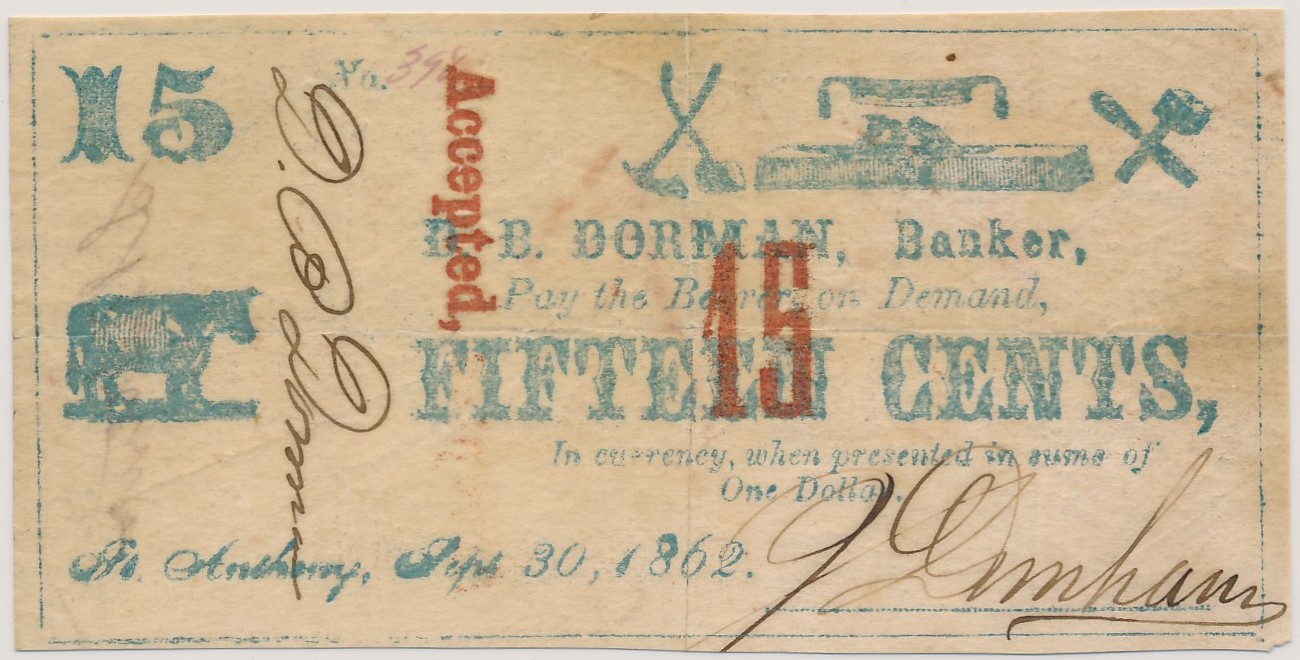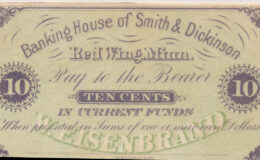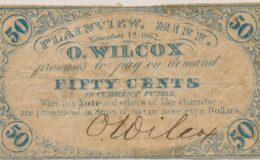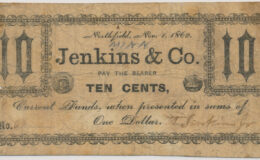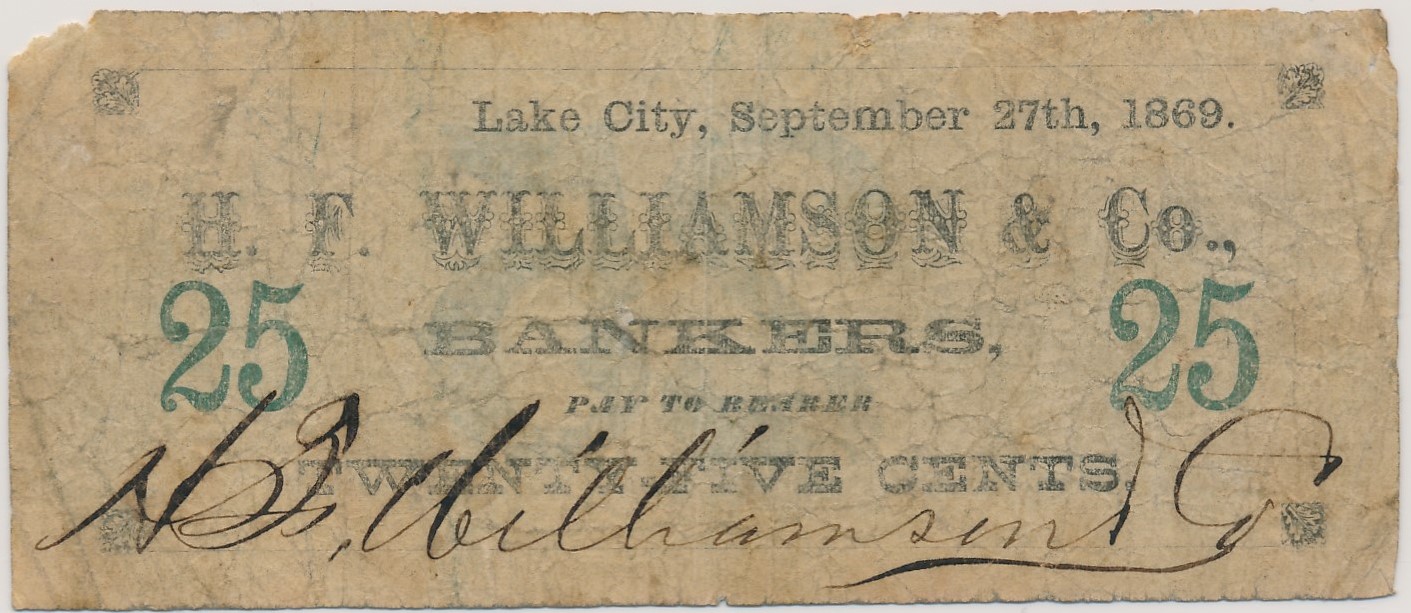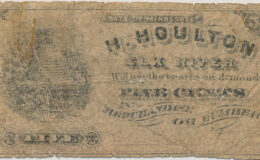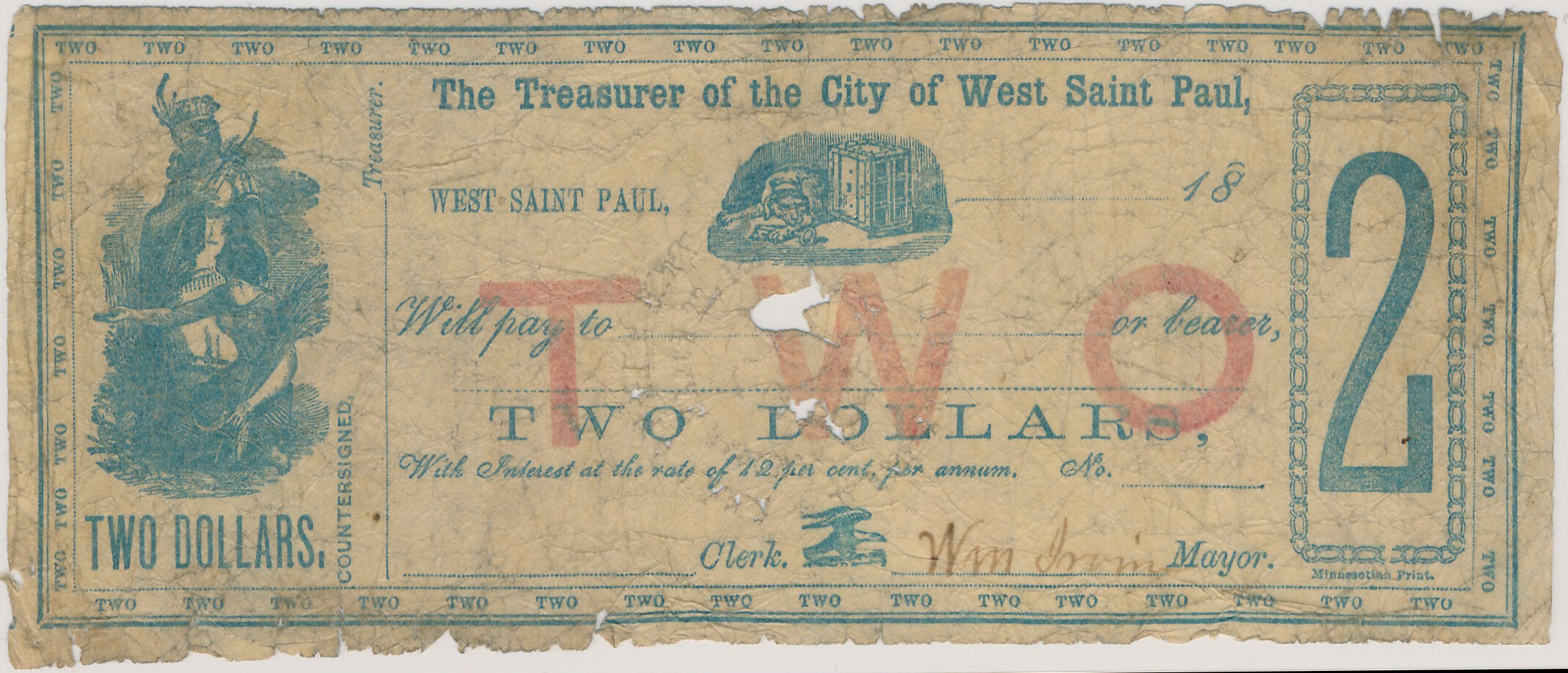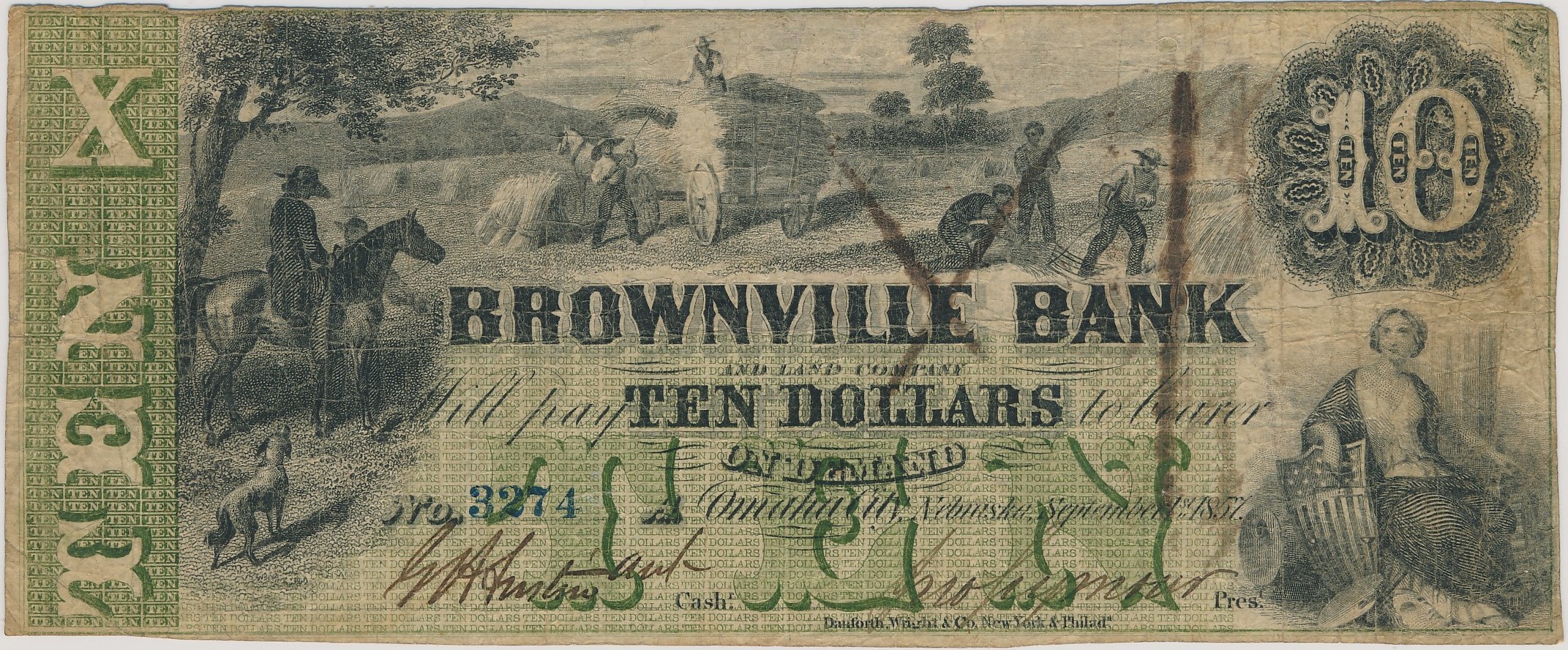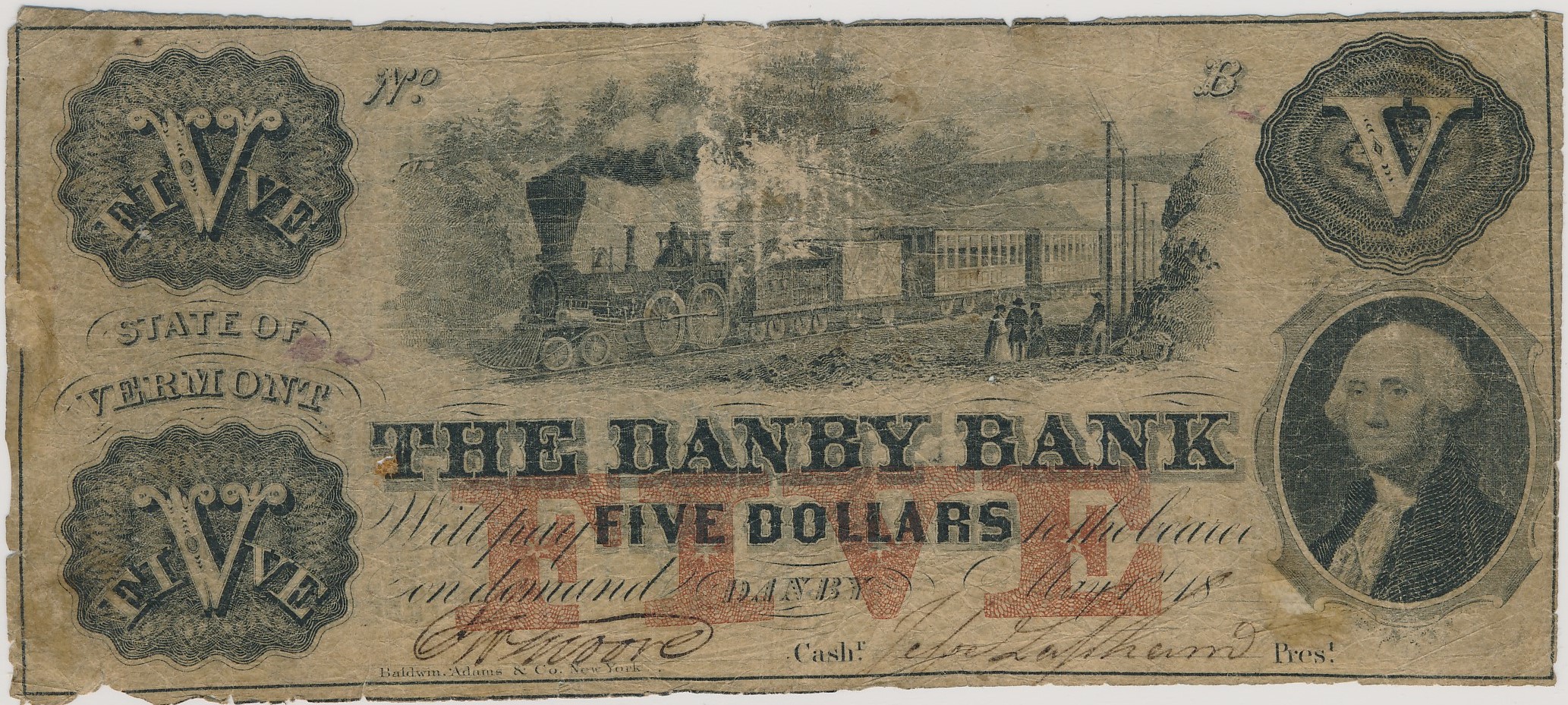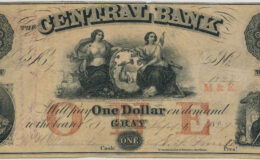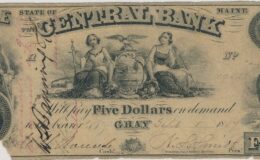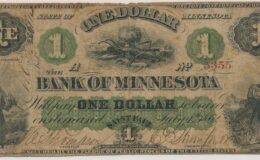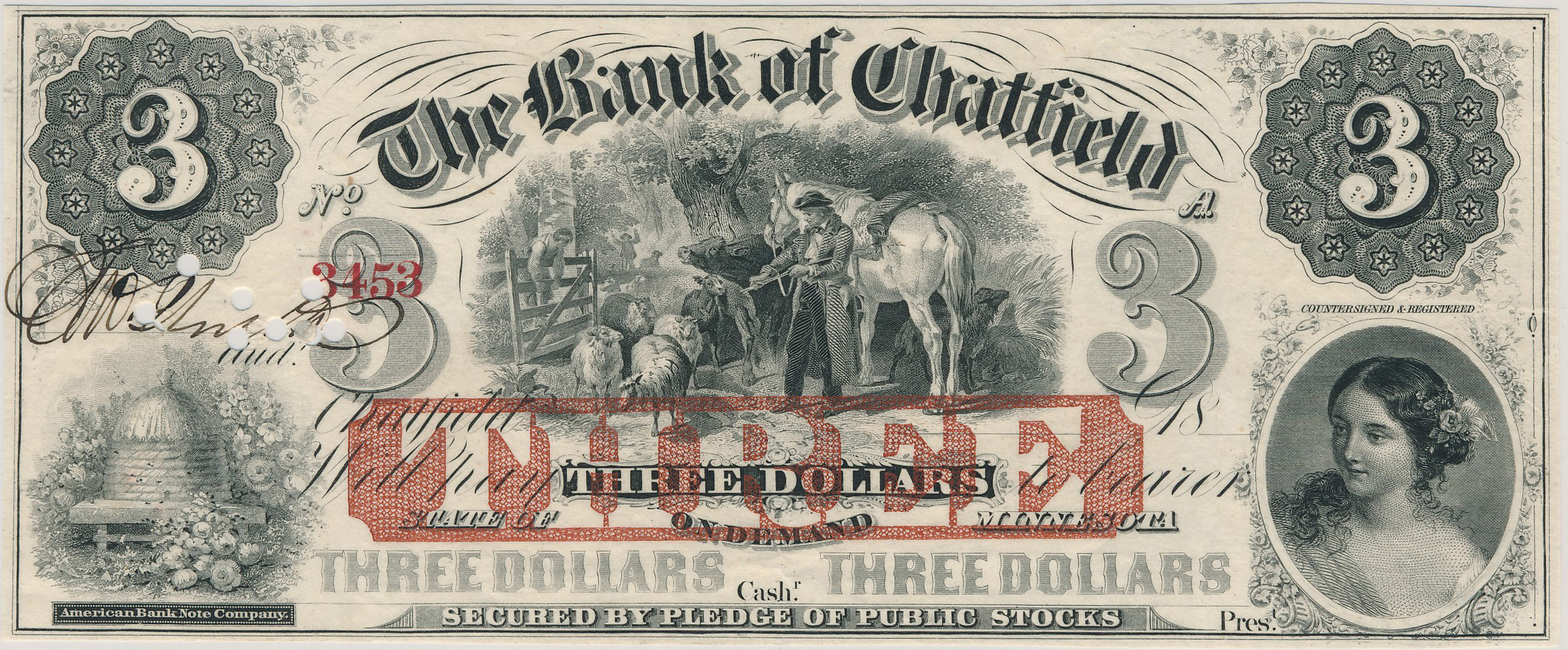Paper Money : Postcards : Collectibles
Exchange Bank
- Home
- Collection
- Exchange Bank
Exchange Bank
Mr. T. Romeyn B. Eldridge of Milwaukee filed to organize the Exchange Bank on August 18, 1858 with a capital of $25,000. It first issued notes on November 12, 1858 and was the second state bank to open for business. Eldridge increased the capital stock to $100,000 and on November 20 sold the bank to brothers Daniel and Lawrence Graham of Glencoe. The Grahams had close ties to the Minneapolis and Cedar Valley Railroad Company, and used their bonds as collateral for the note issues. The notes were used to pay laborers and contractors for work on the railroad, and were at first well received. Before long, the notes were heavily discounted, as the dubious nature of the securities was realized. Notes were first protested on June 28, and by mid-August the auditor had published a notice of default. Notes were eventually redeemed by the auditor at the rate of 21.25 cents per dollar.
The earliest notes issued from the bank were signed by J. H. Eldridge as cashier and C. J. Burnell as president. Burnell was also cashier of the Bank of Saint Paul and signed notes of that bank. The auditor authorized Toppan, Carpenter & Co. to engrave a 1-2-5-5 plate. It printed 8,000 sheets amounting to $104,000. A total of $80,502 was issued. The auditor destroyed $23,498 of remainder notes on June 1, 1860. There was $3,168 outstanding on the auditor’s books in 1883. The plate was destroyed on May 10, 1860.
Other Notes
We want to buy paper money like you see here. If you have a note to sell, let us know.












